 Perhaps one of the more important articles demonstrating, in a practical situation (the production and sales of so-called Oriental carpets), how discourses on authenticity are ways of managing an otherwise unregulated economy of signification (both meaning and value), is Brian Spooner‘s long but rich essay in Arjun Appadurai’s edited volume, The Social Life of Things: Commodities in Cultural Perspective (Cambridge University Press, 1986: 195-235).
Perhaps one of the more important articles demonstrating, in a practical situation (the production and sales of so-called Oriental carpets), how discourses on authenticity are ways of managing an otherwise unregulated economy of signification (both meaning and value), is Brian Spooner‘s long but rich essay in Arjun Appadurai’s edited volume, The Social Life of Things: Commodities in Cultural Perspective (Cambridge University Press, 1986: 195-235).
They Just Call it “Food”
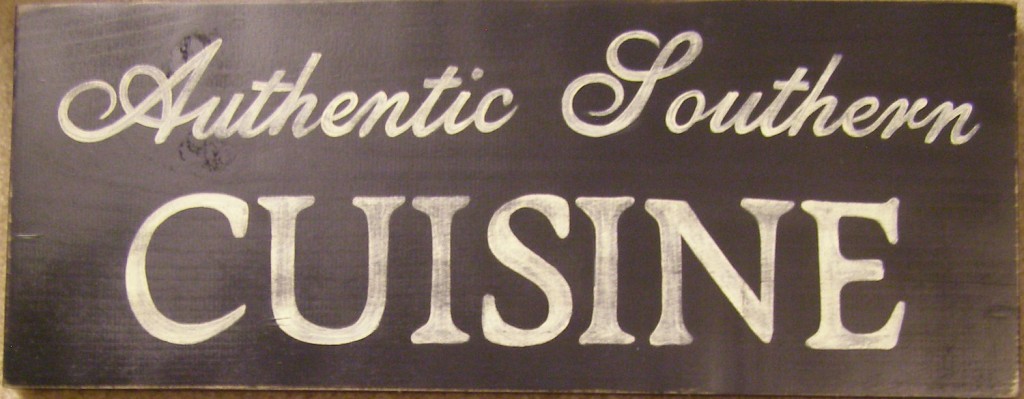 In a recent exchange between the spoiled, impetuous young King (who, on this occasion, was angered by a disrespectful comment from his uncle) and his far more seasoned, politically powerful grandfather, in season three of the TV series Game of Thrones, viewers heard the following:
In a recent exchange between the spoiled, impetuous young King (who, on this occasion, was angered by a disrespectful comment from his uncle) and his far more seasoned, politically powerful grandfather, in season three of the TV series Game of Thrones, viewers heard the following:
Joffrey Baratheon: I am the king! I will punish you.
Tywin Lannister: Any man who must say, “I am the king” is no true king.
The rule of thumb that I would propose is that as soon as we switch from just doing something ourselves to talking about doing it–telling someone else how to do it or comparing the various ways in which it is done–then whatever it was that we were doing is no longer what it’s all about. That this applies doubly when it comes to talking about someone else’s doings, no matter how fair and balanced we think we’re being, cannot be overlooked.
After all, here in Alabama people just call it “food” and eat it.
Persons, Displaces, and Things
 In early September 2013 there’s a conference in Liverpool, hosted by the European Association for the Study of Religions (EASR) and the International Association for the History of Religions (IAHR). The description of the event–entitled “Religion, Migration, and Mutation”–starts as follows:
In early September 2013 there’s a conference in Liverpool, hosted by the European Association for the Study of Religions (EASR) and the International Association for the History of Religions (IAHR). The description of the event–entitled “Religion, Migration, and Mutation”–starts as follows:
Changing Symbols and the Swastika
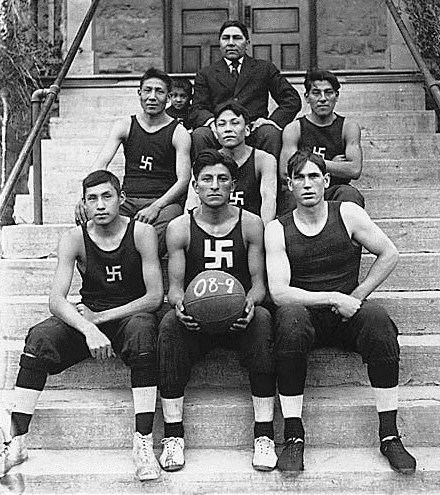
Symbols serve as a significant way to express identity within society. Crosses generally identify someone as a Christian, a hammer and sickle as a communist, and black and white houndstooth as a University of Alabama fan. Of course, that simple equation provides an arena for significant competition about exactly which symbol represents which ideas. The apparent incongruency of Native Americans wearing swastikas on their basketball uniforms (Chilocco Indian Agricultural School in Oklahoma, 1908) derives from the assumption that symbols have a defined meaning. As with identity labels generally, the meanings of symbols like the swastika shift over time, and seldom does a symbol have only one meaning.
Remember the Ala-what-now?

Okay, full disclosure: I had every intention of posting this short note two days ago on June 11 to make sure it went online on the same day as the anniversary it describes. But, maybe it’s fitting that the scheduling was a little off-kilter… Because what’s in a day, anyhow? Continue reading “Remember the Ala-what-now?”
Blurred Boundaries
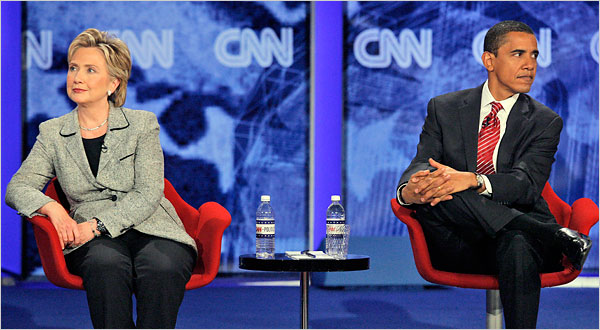 In preparation for the first meeting of Culture on the Edge, at the University of Alabama, the group looked at some resources that purport to study identity in a more dynamic, theoretically-engaged way–e.g., works devoted to studies of diaspora, hybridity, syncretism, etc.–in hopes of finding models for how to study the production and movement of identity but without (unintentionally, perhaps) reproducing the very thing one means to study. Continue reading “Blurred Boundaries”
In preparation for the first meeting of Culture on the Edge, at the University of Alabama, the group looked at some resources that purport to study identity in a more dynamic, theoretically-engaged way–e.g., works devoted to studies of diaspora, hybridity, syncretism, etc.–in hopes of finding models for how to study the production and movement of identity but without (unintentionally, perhaps) reproducing the very thing one means to study. Continue reading “Blurred Boundaries”
Writing a History of Origins
As part of an event marking the contributions to the study of religion made by (the now late) Wilfred Cantwell Smith, held at the University of Toronto in the Spring of 1992, Jonathan Z. Smith presented a paper entitled “Scriptures and Histories.” Soon published in a special issue of Method & Theory in the Study of Religion (and recently included as chapter 3 of Smith’s On Teaching Religion), it deftly picks up on themes in the former Smith’s work but expands on them considerably since, as the latter Smith writes near the opening of his essay: “We share last names, but not much else.” Continue reading “Writing a History of Origins”
Kids Drink Pop, So What?
 I think it’s worth pausing for a moment to ask why the above photo (originally found here), recently used as the cover image on the Culture on the Edge facebook page, “works.” Given the theoretical goals of this research group (more on that under Identity), why this image of a young Tibetan Buddhist monk (or at least someone dressed up like one, of course) drinking so casually from a pop bottle. What do we assume it “says” and about whom? Continue reading “Kids Drink Pop, So What?”
I think it’s worth pausing for a moment to ask why the above photo (originally found here), recently used as the cover image on the Culture on the Edge facebook page, “works.” Given the theoretical goals of this research group (more on that under Identity), why this image of a young Tibetan Buddhist monk (or at least someone dressed up like one, of course) drinking so casually from a pop bottle. What do we assume it “says” and about whom? Continue reading “Kids Drink Pop, So What?”
The Other Shoe Drops
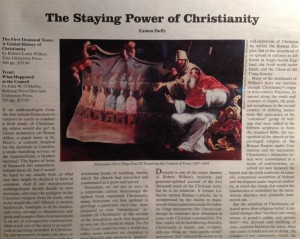 In the same issue of The New York Review of Books that I cited elsewhere (the June 20, 2013 issue), there appears a review essay on two new books on the history of Christianity. Written by the Cambridge University historian, Eamon Duffy, and entitled “The Staying Power of Christianity,” it tackles Robert Wilken’s The First Thousand Years: A Global History of Christianity and John O’ Malley’s Trent: What Happened at the Council. For those interested in bringing more nuanced social theory to the study of religion, Duffy’s opening lines promise much: “If an anthropologist from the star system Sirius were to teleport to earth to conduct a field study of Christianity, where would she go?” What follows is a quick list of several different sites–e.g., a Greek monastery on Mount Athos, a papal mass in St. Peters, a Pentecostal snake-handling service, a Quaker meeting house, etc.–that makes plain that the notion of a homogenous thing called Christianity is hardly a given for many current scholars. “History is written backwards, hindsight is of its essence,” Duffy writes in concluding his introductory paragraph, “and every attempt to characterize any great and complex historical movement is an act of retrospective construction: what is left out of the story is just as significant as anything included.” Continue reading “The Other Shoe Drops”
In the same issue of The New York Review of Books that I cited elsewhere (the June 20, 2013 issue), there appears a review essay on two new books on the history of Christianity. Written by the Cambridge University historian, Eamon Duffy, and entitled “The Staying Power of Christianity,” it tackles Robert Wilken’s The First Thousand Years: A Global History of Christianity and John O’ Malley’s Trent: What Happened at the Council. For those interested in bringing more nuanced social theory to the study of religion, Duffy’s opening lines promise much: “If an anthropologist from the star system Sirius were to teleport to earth to conduct a field study of Christianity, where would she go?” What follows is a quick list of several different sites–e.g., a Greek monastery on Mount Athos, a papal mass in St. Peters, a Pentecostal snake-handling service, a Quaker meeting house, etc.–that makes plain that the notion of a homogenous thing called Christianity is hardly a given for many current scholars. “History is written backwards, hindsight is of its essence,” Duffy writes in concluding his introductory paragraph, “and every attempt to characterize any great and complex historical movement is an act of retrospective construction: what is left out of the story is just as significant as anything included.” Continue reading “The Other Shoe Drops”
What is a Andy Warhol?
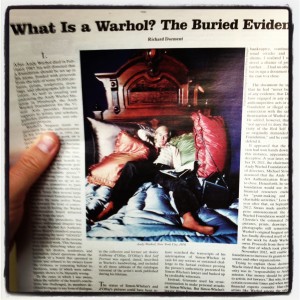 Those interested in how discourses on authenticity work to–as this article states it–stabilize an economy (of any form of signification, be it meaning or money) should consider the current issue (June 20, 2013, vol. 60/11) of The New York Review of Books and its article “What is a Andy Warhol”–an analysis of the goings on of the now defunct, but once powerful and always controversial, Andy Warhol Authentication Board.
Those interested in how discourses on authenticity work to–as this article states it–stabilize an economy (of any form of signification, be it meaning or money) should consider the current issue (June 20, 2013, vol. 60/11) of The New York Review of Books and its article “What is a Andy Warhol”–an analysis of the goings on of the now defunct, but once powerful and always controversial, Andy Warhol Authentication Board.


